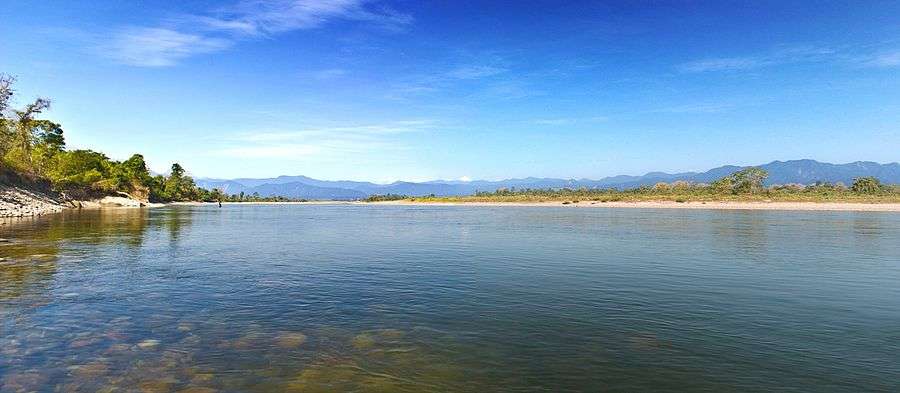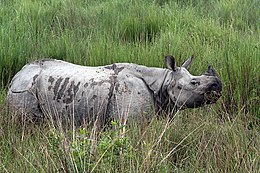Nameri National Park
Nameri National Park is a national park in the foothills of the eastern Himalayas in the Sonitpur District of Assam, India, about 35 km from Tezpur. Nameri is about 9 km from Chariduar, the nearest village.[1]
| Nameri National Park & Tiger Reserve | |
|---|---|
IUCN category II (national park) | |
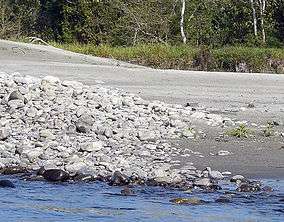 Nameri National Park | |
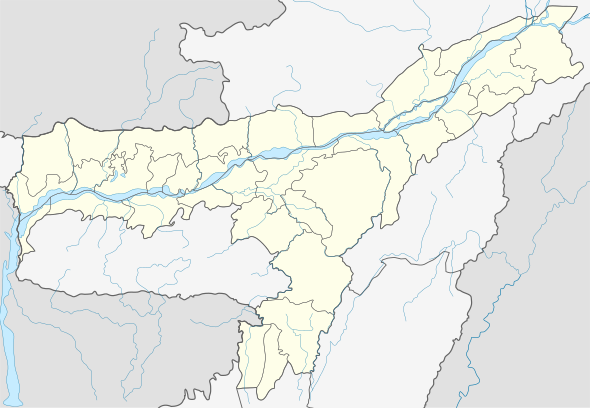 | |
| Location | Sonitpur Assam India |
| Nearest city | Tezpur, India |
| Coordinates | 27°0′36″N 92°47′24″E |
| Area | 200 km2 (77.2 sq mi) |
| Established | 1978 |
| Governing body | Ministry of Environment and Forests, Government of India |
| Website | http://nameritr.org |
Nameri shares its northern boundary with the Pakhui Wildlife Sanctuary of Arunachal Pradesh. Together they constitute an area of over 1000 km2 of which Nameri has a total area of 200 km2.[2]
Nameri is also declared as Tiger Reserve in the year 1999-2000, which is the 2nd Tiger reserve of Assam after Manas Tiger Reserve. It has 2 core areas: Nameri National Park & Sonai- Rupai Wildlife Sanctuary (Satellite Core of the Nameri Tiger Reserve). The river Jia- Bhoroli is the lifeline of Nameri, which flows along the Southern boundary of the park from North- West to South- East. In the eastern side, the river Bor- Dikorai flows along the southern boundary from North- East to South- West which is the tributary of river Jia- Bhoroli.
Rivers
The main Rivers are Jia- Bhoroli and Bor Dikorai. Other tributaries of these two rivers are: Diji, Dinai, Nameri, Khari, Upper Dikiri which originates in the Arunachal Himalayas and flows through Pakke TR and Nameri TR.
Etymology
The park was declared a reserve forest on 17 October 1978. It was set up as a Nameri Sanctuary on 18 September 1985 with an area of 137 km2 as a part of Naduar Forest Reserve. Until then the Nameri National Park was heavily used for logging. Another 75 km2 was added on 15 November 1998 when it was officially established as a National Park.
The Jia Bhoroli river of Assam was famous since the time of British for the golden mahseer angling.[3] The angling was officially banned in this Tiger reserve from 2011.

Flora
The vegetation type of nameri is of semi-evergreen, moist deciduous forests with cane and bamboo brakes and narrow strips of open grassland along rivers are also found here. The forests are rich in epiphytes, lianas, and creepers and clump-forming bamboo.[2]
This forest has over 600 species. Some notable species are Gmelina arborea, Michelia champaca, Amoora wallichi, Chukrasia tabularis, Ajar, Urium poma, Bhelu, Agaru, Rudraksha, Bonjolokia, Hatipolia akhakan, hollock, Nahor. It is home for orchids like Dendrobium, Cymbidium and Cypripedioideae.[3]
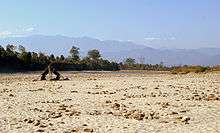
Fauna
This is excellent elephant country and was considered to be an elephant reserve. It is an ideal habitat for a host of other animals including the tiger, leopard, Hog Deer, sambar, dhole (the Asiatic wild dog), Gaur, clouded leopard, leopard cat, Barking Deer ,wild boar, sloth bear, Marbled Cat, Himalayan black bear, capped langur and Indian giant squirrel.

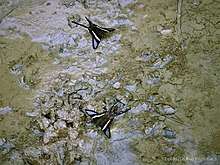
Nameri is a birdwatcher's paradise with over 300 species. The white winged wood duck, great pied hornbill, wreathed hornbill, rufous necked hornbill, black stork, ibisbill, blue-bearded bee-eaters, babblers, plovers and many other birds make Nameri their home.[4]
Birding in Nameri
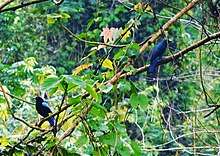
.jpg)
Nameri is the best sighting spot of the endangered bird White- winged Duck (Asarcornis scutulata), which is also the state bird of Assam. Ibisbill and Merganser are the two species of migratory birds visit the park every winter. There are 374 (Three hundred seventy four) species of bird recorded from this park in 2005 by Mr. Maan Barua and Mr. Pankaj Sharma.[5]
Conflicts and threats
Nameri faces two threats: One is due to continued official logging in the area of Sonitpur.
The major threat for Nameri is human/animal conflict due to around 3000 cattle grazing the forest.[4] The other human/animal conflict is due to the vast group of elephants in Nameri. There were several cases of elephant deaths. In 2001 there were 18 elephant deaths.[6] A great threat is possessed on this protected area because of poachers who hunt the valuable birds for their wings.
References
| Wikimedia Commons has media related to Nameri National Park. |
- Tourism.webindia123.com
- "An ornithological survey in north-east India". Archived from the original on 31 January 2014. Retrieved 27 June 2011.CS1 maint: BOT: original-url status unknown (link)
- "Press Information Bureau English Releases". Retrieved 8 July 2011.
- "Nameri-Aassam". Archived from the original on 25 September 2011. Retrieved 7 July 2011.
- Barua and Sharma, Maan and Pankaj. "The birds of Nameri National Park, Assam, India" (PDF). FORKTAIL.
- "PROTECTED AREA UPDATE". Archived from the original on 1 October 2011. Retrieved 8 July 2011.
